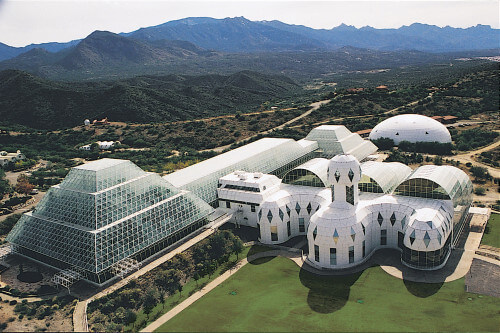
Image Source
Universities and museums are natural allies. Both have missions that include examining and preserving knowledge about the natural and human world to increase human understanding. Museums within universities are partnerships that often bring an extraordinary depth of research to the collections they contain while also bringing these artifacts into public view.
There are many kinds of museums. Each focuses on a specific area of human knowledge from anthropology to contemporary art to naval warfare to zoology. Collaboration with a college or university brings research tools, student and volunteer labor, and community support and input into the process of procurement, preservation, and exhibition of each university museum’s collection.
Museums generally have permanent collections that are always on display, temporary exhibits that come and go, and other artifacts that are cataloged and stored for research and other purposes. Museums are also sometimes the location for displays of film, video, live performances, and educational and interactive presentations of many kinds. University museums also serve as centers of teaching and research and many are located in buildings of significant architectural relevance and beauty.
Here is a list of 30 the most outstanding university museums around the world listed by country.
UNITED STATES
1. The University of Pennsylvania Museum of Archaeology and Anthropology, Philadelphia, PA
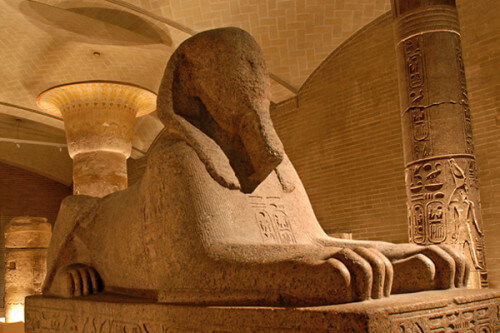
This museum was founded in 1887 as a part of the University of Pennsylvania. Among its many collections is the largest collection of African artifacts in the United States. Many of these objects were obtained by the famous German ethnographer Leo Frobenius between the years of 1891 and 1937 during the early history of European encounters with African cultures.
The museum does much of its own field excavation work in conjunction with University researchers and students, including the collection of artifacts belonging to the America Section. This is the largest section in the museum with over 300,000 specimens of anthropological significance from Alaska to Argentina covering the span of human history.
Also included in the permanent collection are significant specimens from ancient Cannan and Israel, 42,000 items from ancient Egypt and Nubia – the largest collection in the U.S., a museum section devoted to prehistoric European archeology, an Oceanian collection, a Historical Archaeology Section housing materials relating to world history since the year 1400, and one of the largest collections of Babylonian clay writing tablets in the world.
2. Harvard Museum of Natural History, Cambridge, MA
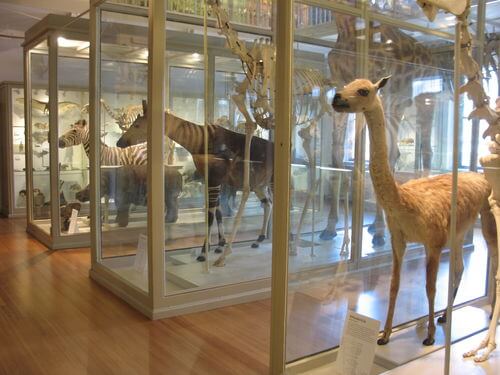
The Harvard Museum of Natural History is the public exhibition venue for the research museums at the Museum of Comparative Zoology, the Harvard University Herbaria, and the Mineralogical and Geological Museum at Harvard University. It is one of the four Harvard Museums of Science & Culture, all open to the public.
The museum features many interactive exhibits and has permanent galleries of South American animals, New England forests, Asian birds and animals, an Africa gallery, fossil mammals, minerals and gems,and climate change, along with frequent special exhibits. The museum welcomed more than 200,000 visitors last year, hailing from all 50 US states and 126 countries (including 35,000 students with their teachers)
A unique exhibit among the permanent collections is the Glass Flowers Collection comprised of 4,000 intricately detailed glass models of flowers from 847 different plant species made by glass artisan Leopold Blaschka and son Rudolph between 1887 and the late 1930s.
3. Lincoln Heritage Museum at Lincoln College, Lincoln, IL
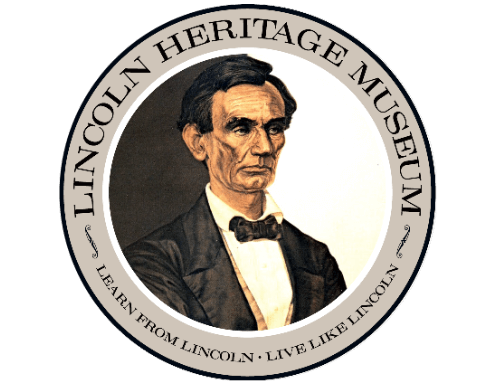
The Lincoln museum preserves artifacts related to the life and presidency of Abraham Lincoln. Objects from Lincoln’s home, books and other personal possessions of Lincoln, and a one of a kind handmade campaign banner depicting Lincoln as the “Rail Splitter Candidate” are among the permanent displays. There is also a unique Civil War drum and several portraits and sculptures of Lincoln.
The museum also has some items unrelated to Lincoln, including a steel beam from the World Trade Center recovered after the September 11, 2001 attacks and a Hall of Presidents with handwritten documents from every president of the United States.
The museum is part of Lincoln College, the only college established during Lincoln’s lifetime bearing his name.
4. Berkeley Art Museum and Pacific Film Archive, Berkeley, CA
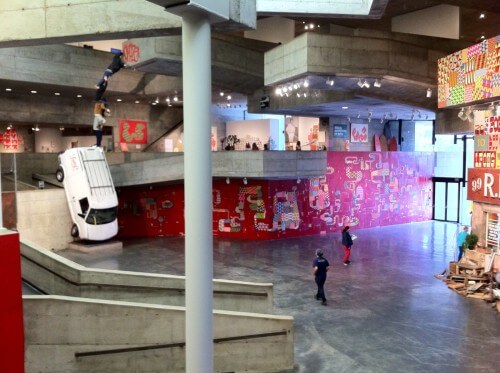
A part of the University of California at Berkeley, BAM/PFA was founded 1963 with a donation of 45 paintings by artist Hans Hofman along with a gift of $250,000 made by him to the University. The modern building design was done by architects Mario Ciampi, Richard L Jorasch, Ronald E. Wagner, and the building opened in 1970.
This museum is one of largest university art museums in the U.S., possessing an archive of over 16,000 paintings, sculptures, and other artworks as well as 14,000 films and videos. The art museum’s focus is abstract expressionism, and it has the biggest collection of Abstract Expressionist artists in any museum in the world.
The Pacific Film Archive was founded in 1971 with a mission of preserving significant cinematic history. The public theater has 450 programs each year showing classic and experimental cinema. rare films and print editions, thematic retrospectives, and restored silent era films with live musical accompaniments .
5. University of Arizona Arts & Museums, Tucson, AZ
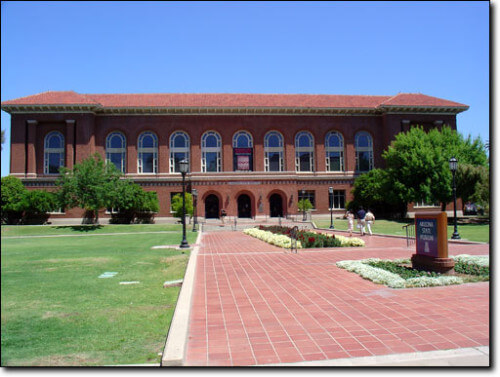
Image Source
There are several separate museums at the University of Arizona.
Established in 1893, the anthropology section is the oldest anthropology museum in Arizona. It contains outstanding ethnographic collections representing the indigenous Indian cultures of the region with large samples of pottery, basketry, and other artifacts.
The University of Arizona is also home to a world-class art museum featuring examples of European and American fine art since the Renaissance and a performing arts center where student performances in music, dance, and theater are open to the public.
A few miles outside of Tucson is the Biosphere 2 “World Under Glass.” This unique, human-made environment covers 14 acres and is completely enclosed in a glass bubble. It contains a living rain forest, a replica ocean, and other niche ecological environments where researchers live and study. The Biosphere 2 is listed in the book “Time-Life 50 Wonders of the World.”
The Campus Arboretum is the oldest green space in Arizona and home to thousands of plant specimens from semiarid climates around world.
The Center for Creative Photography is an archive, museum, and research center for the art of photography.
The Flandrau Science Center and Planetarium has regular astronomical exhibits and shows.
The Jim Click Hall of Champions records the history of athletics in the state of Arizona.
There is also a Pharmacy Museum and a Mineral Museum at the University of Arizona.
6. U.S. Naval War College Museum, Newport, RI
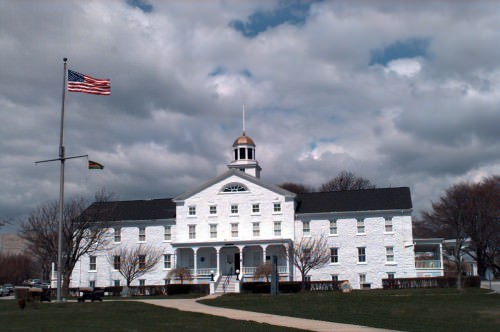
The collection at the U.S. Naval War College Museum highlights important events and developments in the science of war at sea, particularly the naval history of Narragansett Bay starting in the colonial era. Exhibits tie in with the curriculum of the college.
The building that houses this museum was originally the location of the Newport Asylum of the Poor. In 1884 it was converted to use as the U.S. Naval College and later designated as the museum. The building is now in the registry of Historic Landmarks.
Well known naval historian Captain Alfred Thayer Mahan, US Navy, taught here between 1886 and 1889, giving lectures that were later published in the important naval history book, “The Influence of Sea Power Upon History, 1660-1783,” published in 1890.
CANADA
7. Agnes Etherington Art Center, Queen’s University, Kingston, Ontario
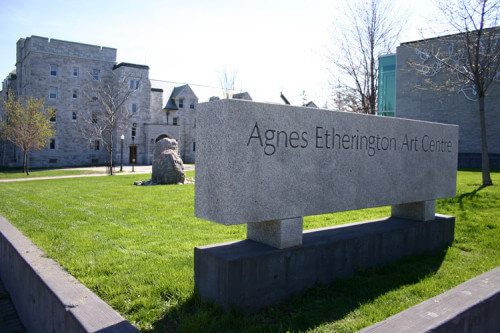
This Art Center was originally developed in 1957 following a bequest of Agnes Etherington (1880-1954), a private patron of the arts. An eight million dollar fund raising campaign in the year 2000 financed an expansion of eight new exhibition halls, a large art storage facility, a studio for production of public programs, an atrium, an art rental and sales venue, and restoration of Agnes Etherington’s original house.
The museum’s collections are centered on Canadian historical and contemporary art and contain the Alfred Bader Collection of European Art of the Baroque era. The museum also owns the Justine and Elisabeth Lang Collection of West African Art which is among the finest of such collections in Canada. Also represented are examples of of Inuit art, Canadian quilts and costumes, and other ethnographic holdings related to the region.
8. Museum of Anthropology, University of British Columbia, Vancouver
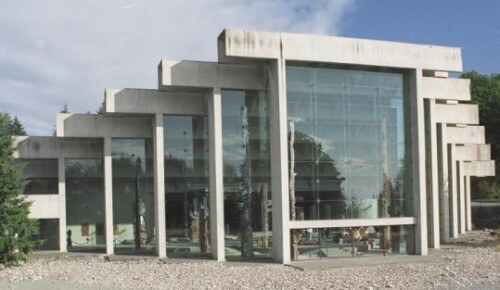
This museum is world-renowned for its high quality research and teaching programs, multiple collections, public programs, and community involvement. The spectacular regional architecture of the Anthropology Building, and its beautiful location on the cliffs of Point Grey, are other points of attraction.
The Museum of Anthropology building is built in a traditional Northwest Coast open post and beam style of construction. Designed by Canadian architect Arthur Erickson, the museum first opened in 1976. In 1990, a building extension added a resource library, laboratory, office space, and an exhibition gallery where 600 European ceramic pieces are on display.
A significant architectural detail is a set of enormous wooden doors carved by Walter Harris, Earl Muldoe, Art Sterritt, and Vernon Stephens. All four are master carving artisans of the local Gitxsan indigenous community.
The Museum of Anthropology contains 38,000 ethnographic objects and another 535,000 archaeological objects cared for by UBC’s Laboratory of Archaeology. These materials come from many parts of the globe, including Africa, Asia, the South Pacific, America, and Europe.
There is also an extensive collection of textiles from around the world and over 6,000 specimens from British Colombia’s indigenous cultures.
9. University of Saskatchewan, Saskatoon
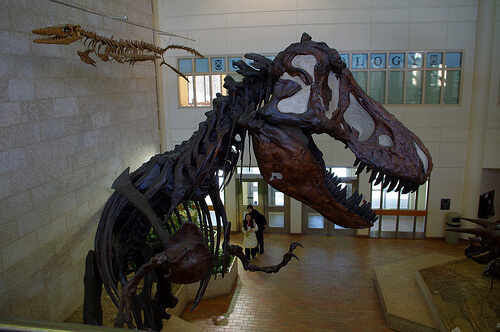
This University of Saskatchewan, Saskatoon has multiple museums including:
The Museum of Antiquities exhibiting full scale replica sculpture from ancient Egyptian, Greek, Roman, and Near East civilizations; The Gordon Snelgrove Gallery hosting exhibition space for student artists and members of the community; and The Museum of Natural Sciences which is operated jointly by the Biology and Geology departments at the University, focusing on exhibits concerning physical evolution through geological time.
PORTUGAL
10. Science Museum of the University of Coimbra, Coimbra
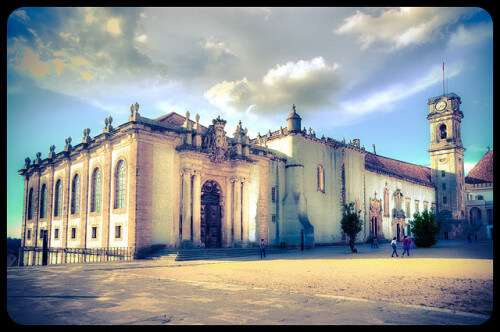
The University of Coimbra was founded in the year 1290, and it is one of the oldest and longest operating universities in the world.
The main collections here come from the departments of botany, physics, anthropology, zoology, and mineralogy at the University of Coimbra. Separate museums run by each of these departments were brought together into one museum in 2007.
In addition, there are collections from the Astronomical Observatory and Geophysical Institutes at the University displaying numerous scientific instruments from the 18th and 19th centuries.
POLAND
11. The Collegium Maius, Jagiellonian University, Krakow
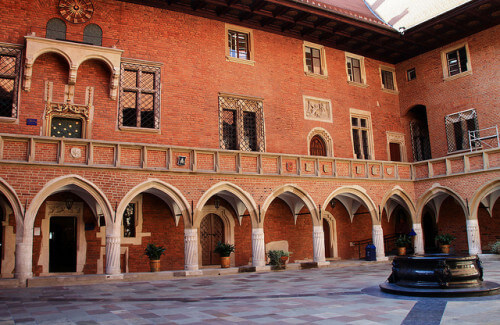
Collegium Maius means Great College in Polish. The museum is located in the oldest building of the Jagiellonian University in Old Town Krakow. Originally built as a private manor in 1364, the building was converted into a university in 1400.
Renovations in the early 1500s gave the building a Gothic architectural makeover and added a courtyard with a well at the center and surrounding arcades. The two story building originally had upstairs living quarters for professors and downstairs lecture halls where students gathered, including the famous astronomer Copernicus.
On exhibit are the historic lecture halls, communal living and study areas, professors quarters, original library, and a collection of Gothic maces. The Jagiellonian Globe, the oldest globe showing the Americas, is also housed here. Numerous medieval scientific instruments, globes, paintings, coins, and medals are part of the collection.
A permanent exhibit called, “The World of Senses” explores the human capacities of perception and mis-perception. There are also frequent visiting exhibits and temporary displays.
AUSTRALIA
12. Museums at the University of Queensland, Oueensland
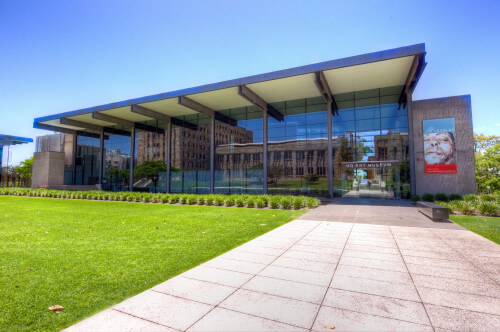
The University of Queensland Museum of Art collection is the second largest public art collection in Queensland, containing a total of 3,000 artworks. One gallery features the National Collection of Artist’s Self Portraits with self-portrait paintings and photographs by Australian artists.
There is also an extensive collection of other works by 20th century artists including Rupert Bunny, Robert Hawker Dowling, Rosalie Gascoigne, Peter Hennessey, Rosemary Laing, Sidney Nolan, and Tony Tuckson.
The University of Queensland also houses an Antiquities Museum with a large collection of ancient coins from Rome and Greece and the Marks-Hirshfeld Museum of Medical History which is the largest of its kind in Australia.
The University’s Anthropology Museum contains over 19,000 ethnographic specimens as well as 5,000 ethnographically relevant photographs. Nearly half of the collection is made up of objects and photographs of, or by, Aboriginal Australian groups and individuals. There is also a large collection of artifacts from the Pacific peoples.
13. Museums and Collections, Macquarie University, Sydney
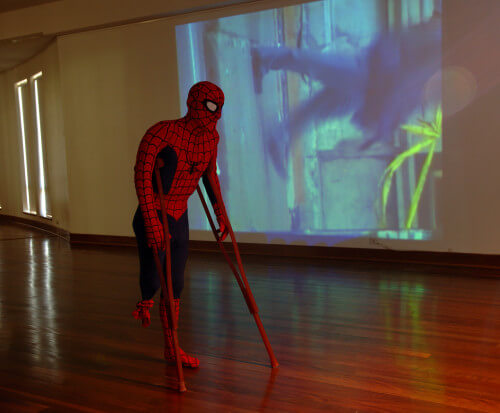
Macquarie University has nine separate museums and galleries, including the Macquarie University Art Gallery which displays six shows per year featuring contemporary artists.
The Museum of Ancient Cultures exhibits artifacts from ancient Egypt, Greece, Rome, ancient Italy, Cyprus and the Near East, and hold the largest ancient papyrus collection in the southern hemisphere.
The Macquarie University Sporting Hall of Fame highlights past and present successes in sports at Macquarie University as well as athletes on the world stage, especially Australian Olympic athletes.
SINGAPORE
14. National University of Singapore Museum
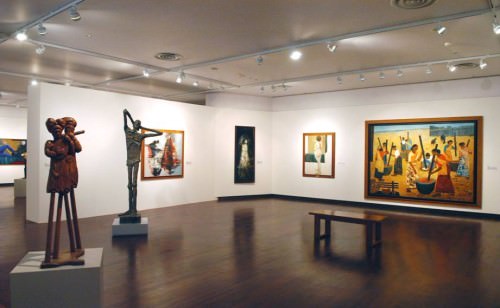
The primary focus of this museum is South East Asian art and culture. The University and museum were established 1955 before Singapore achieved its independence from Britain. The collections span the time periods from the classical Chinese and Indian era to modern and contemporary art. There are a total of over 7,000 artworks and artifacts. Malaysian self-identity and history are central themes in the displays.
ISRAEL
15. Hecht Museum, University of Haifa
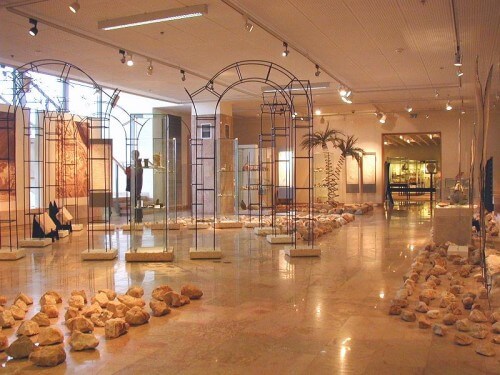
Image Source
Rueben and Edith Hecht donated their private collection of artifacts acquired over a 60 years time span to found this museum. The artifacts they collected are mainly from ancient Israel in the Canaanite period up to the end of the Byzantine period. The layout of the museum’s displays follows a chronological sequence educating visitors about the highlights of the Israelite period.
The museum’s permanent collection started with the Hecht donation but has been expanded significantly since then. It now also includes artifacts on loan from Israel Antiquities Authority and from excavations conducted by the University of Haifa.
Exhibits cover Phoenician culture from the Biblical period and ancient crafts and industries, including the remains of seven ancient boats. One sea vessel on display is a 2,400 year old ship with its original anchor and part of its cargo. Tools and technologies related to glass manufacture, metalworking, mosaic art, medical science, and writing are also represented.
There is also an art wing called “Impressionism and Jewish Artists in the School of Paris” that includes paintings by Van Gogh, Manet, Monet, Pissarro, and others.
16. Beth Hatefutsoth, Tel Aviv University
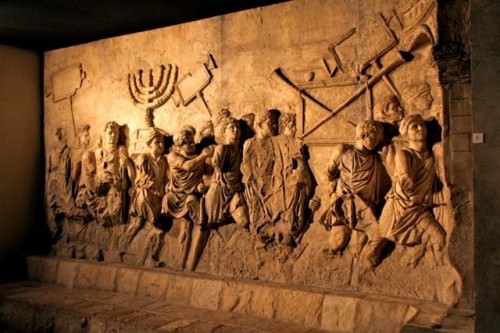
Also known as the Diaspora House, this unique museum follows the history of the Jewish diaspora throughout the world. Opened in 1978, the museum uses innovative audiovisual displays, along with more traditional exhibits, to trace the history of the movement of the Jewish people from 600 BCE to the present.
FRANCE
17. Zoological Museum of Strasbourg, University of Strasbourg
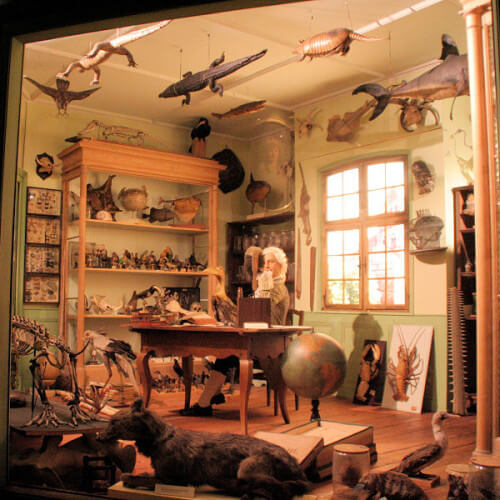
Image Source
Built originally in 1872, and located on the Strasbourg University campus, this museum began with collections from Jean Hermann’s Gallery of Natural History. It has been expanded and remodeled several times over the centuries. It is considered the best natural history collection in France.
Exhibits are from around the world and cover natural history from the Arctic to the Antarctic. Hundreds of thousands of specimens of stuffed animals, animals and insects preserved in alcohol, assembled fossil skeletons, animal skins, bird and reptile eggs, nests, and other natural objects provide a graphic understanding of natural history and its relationship to the environment.
There is a particular emphasis on Alsatian fauna of the region. The collection includes a total of 1,350,000 invertebrate specimens, 1,000,000 insect specimens, and 10,000 mammal specimens.
ENGLAND
18. New Hall Art Collection, University of Cambridge
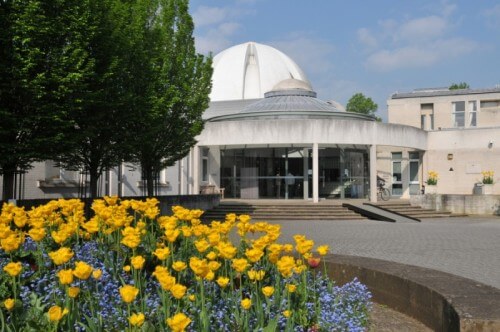
The New Hall Art Collection is part of the Murray Edward’s College at Cambridge University and was founded in 1954 for women students at the University when Cambridge had the lowest number of women students in the U.K. This permanent collection of works by modern and contemporary women artists includes paintings, prints, and sculptures. A total of 400 artworks by international women artists have been donated to the museum by artists and other donors and are on display.
A virtual online catalog allows Internet visitors access to the Gallery’s contents.
19. Whipple Museum of the History of Science, University of Cambridge
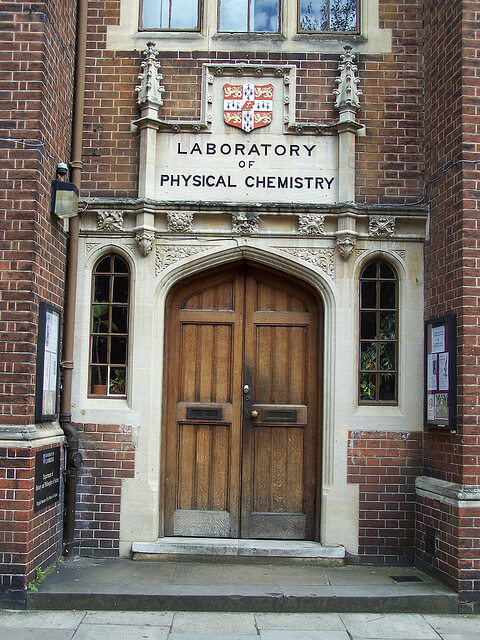
Image Source
An extensive collection of scientific instruments, apparatus, design models, drawings, photographs, and books related to the history of science are on view at this museum. A working library with many early books on scientific topics is also part of the facility.
The museum was founded 1944 with the donation of a private collection by Robert Whipple to the University of Cambridge and is currently part of the Department of History and Philosophy of Science at the University.
Many objects from the medieval period to the 18th century made by English instrument makers are on display. Instruments and manuscripts relating to the fields of astronomy, navigation, surveying, drawing, calculating, and studies in electrical technology are well represented.
20. Pitt Rivers Museum, University of Oxford
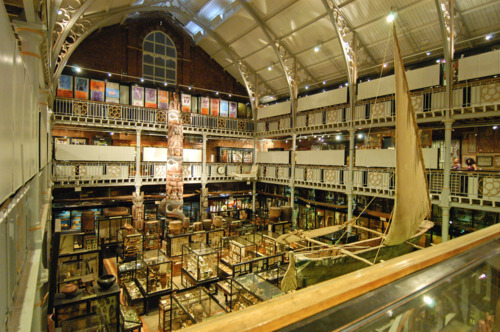
This museum was founded in 1884 by Lt. General Pitt Rivers with the donation of his private collection. One half million archeological and ethnographic objects from the world are now owned by the museum and are available for exhibit.
An archive of photographic and rare sound recordings are also part of the collection, along with original manuscripts of notable early anthropologists and curators associated with museum.
SPAIN
21. Basque Museum of the History of Medicine and Science, University of the Basque Country, Leioa
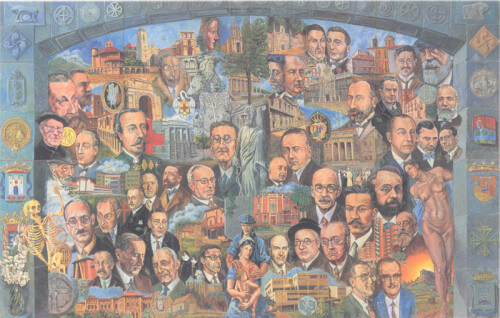
A collection of 6,000 medical and scientific objects from the 19th and 20th centuries used by doctors and hospitals in Basque Country, and a large library of medical books and encyclopedia from the same time period, preserve the collective history of modern medicine in this area.
Collections are displayed in rooms entitled Pharmacy, Weights and Measures, Unconventional Therapies, Anatomy and Physiology, Electrotherapy, Folk Medicine, Microscopes, Gynecology and Obstetrics, Anesthesia, and Surgery.
JAPAN
22. Koishikawa Botanical Gardens, University of Tokyo Graduate School of Science
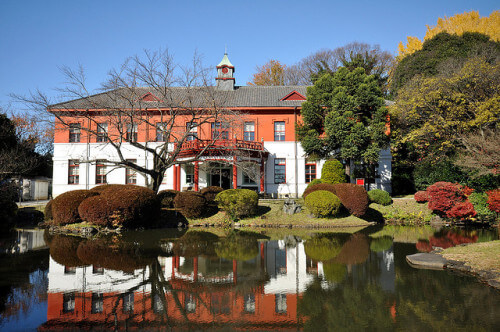
Use of this 40 acre site dates back to 1684 when Tokugawa shogun, Tsunayoshi established a medicinal herb garden in this location. In 1877 the Gardens became part of the University of Tokyo.
Live specimens include 1,400 hardy woody plants, 1,500 hardy herbaceous plants, and 1,100 tropical and subtropical plant species with notable collections of cherries, camellias, maples, and bonsai trees.
Research at the facility is focused on plant evolution and physiology. A library with 20,000 books and journals and a herbarium with 1.4 million specimens are also part of the Botanical Gardens.
23. Kyoto Museum for World Peace, Ritsumeikan University, Kita-ku, Kyoto
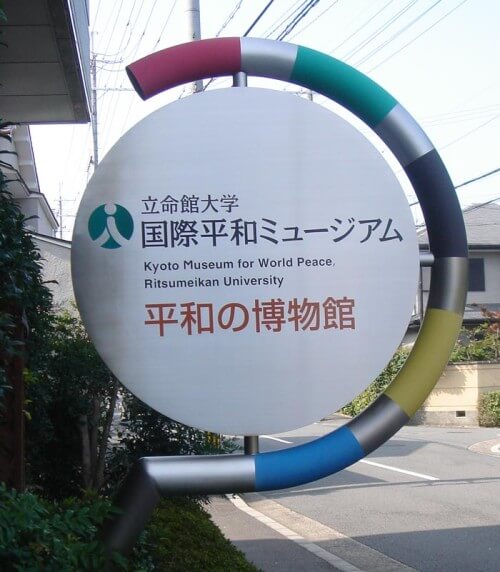
The University of Ritsumeikan created this museum as part of its mission of social responsibility in promoting world peace. Each level of the three story structure develops a particular theme related to peace.
The basement level focuses on Japan’s “Fifteen Year War” with China and later the U.S., U.K., and Netherlands which ended on August 15, 1945 after the bombings of Hiroshima and Nagasaki. It portrays the effects of war on individual people’s lives.
The first floor is devoted to the theme of “Investigating Peace” and houses a Media Library for international peace studies and a lounge with art work on themes related to world peace. The top level contains displays on the theme of “Building Peace,” emphasizing the obstacles that hinder the peace process and what ordinary people can do to create a more peaceful world.
SWITZERLAND
24. Museum of Design, Zurich University of the Arts, Zurich
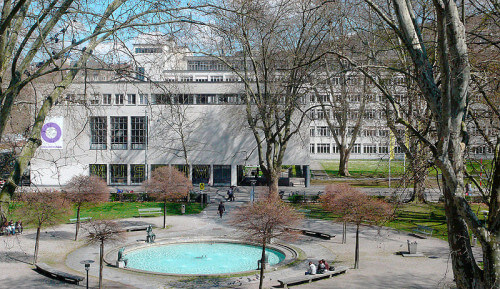
Industrial design, visual communication, architecture, and craft are the subject matter in exhibits at this museum operated by the Department of Cultural Analysis of the Zurich University of the Arts. The museum has four extensive collections of poster, graphics, design, and applied art of international significance.
Each year, five to seven temporary exhibits are displayed in the main hall and another five in other areas of the building. There are also occasional small interventions and performances in various locations around museum.
ARGENTINA
25. Samay Huasi, National University in La Plata, Chilecito, La Rioja Province
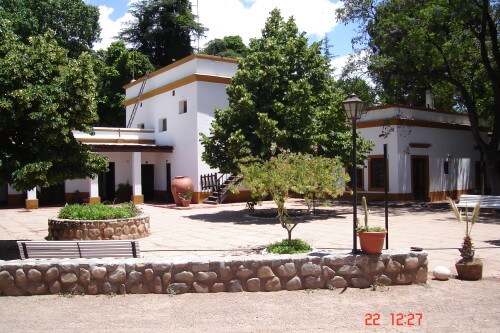
A ranch that once belonged to prominent Argentine mining attorney Joaquin V. Gonzalez is the location of this museum. Samay Huasi means resting place in the local Quechua Indian language, and Gonzalez used the ranch as a vacation home beginning in 1913. Orchards, vineyards, and gardens planted by him still surround the old ranch house and buildings.
The ranch was used as an artist and writer’s retreat in the 1940s and as a retreat for University staff since then. In 1960, part of the ranch was converted into a museum, displaying anthropological and geological materials and manuscripts collected by Gonzalez.
The Antonio Alice Pinacotheca art gallery is also on the premises and features works by Argentine painters.
GERMANY
26. Grassi Museum fur Musikinstrumente (Museum of Musical Instruments), University of Leipzig
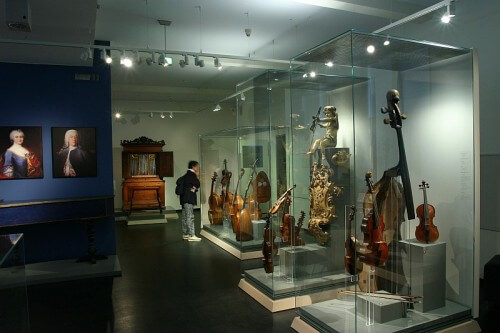
This museum contains one of the largest collections of musical instruments with over 10,000 specimens from many parts of the world, especially Europe.
The museum was founded in 1886 with a collection of musical instruments owned by a Dutchman that was later sold to a paper merchant in 1905. In 1929 the collection was purchased by the University of Leipzig. During WW II, the collection suffered many losses, but it was rebuilt in the 1950s and has been open to the public since then.
The displays are arranged in 13 chronologically sequenced sections and include bowed, wind, and percussion instruments from the 16th century onward. The museum also owns an extensive collection of player piano rolls.
27. Akademisches Kunstmuseum (Academic Art Museum), University of Bonn
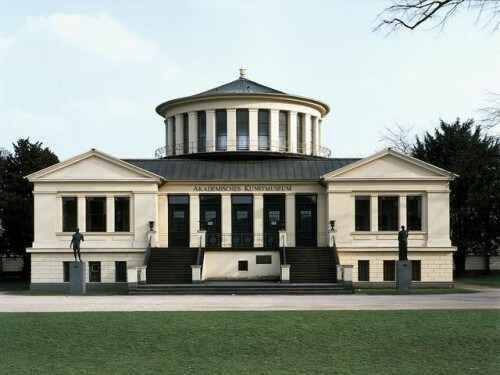
Founded in 1818, this teaching art museum was one of the first established in Bonn. It has one of the largest collections of replica plaster casts of ancient Roman and Greek sculptures in the world. On display are 500 reproductions of statues and other sculpture. Over 2,000 original works of sculpture from the Classical world are also part of the extensive collection.
The Neoclassical building was completed in 1830 and was designed by Hermann Friedrich Waesemann and Karl Friedrich Schinkel.
ITALY
28. Museo Galileo, University of Florence
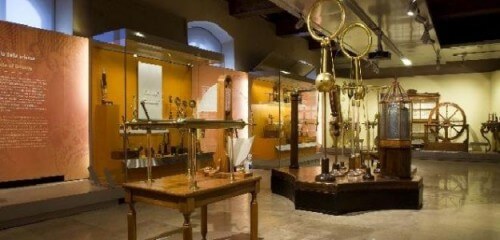
The Museo Galileo was established in 1927 by the University of Florence. Among the more famous of this museum’s specimens is the middle finger from the right hand of famous astronomer and inventor Galileo Galilei. The finger was accidentally removed when Galileo’s body was transported to a new burial spot in 1737.
The museum features many scientific objects from the 15th to 19th centuries, including world globes, telescopes, stethoscopes, and navigation instruments. Video exhibits accompany and expand on material in the displays.
As one the world’s major scientific museums, Museo Galileo’s mission includes conserving and exhibiting their extensive collection of Medici and Lorraine scientific instruments collected since the Renaissance.
DENMARK
29. Natural History Museum of Denmark, University of Copenhagen
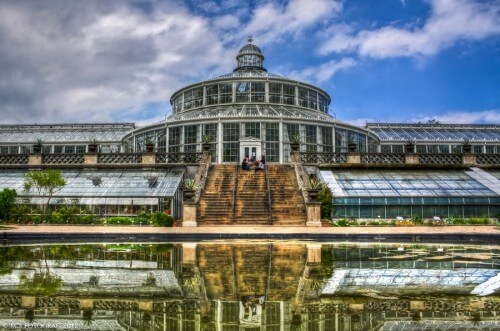
The development and evolution of the Earth and solar system are at the center of the Natural History Museum of Denmark’s research along with cataloging of the natural diversity of Earth’s life forms and exploration of the interaction between humans and their environment.
The museum was formed by a merger of the Botanical Garden, the Botanical Museum & Library, the Geological Museum, and the Zoological Museum at the University to become the Natural History Museum of Denmark. It is now the national museum for natural history in the country.
TAIWAN
30. Asia University Museum of Art, Taipei

The newest museum on this list is located in the first building in Taiwan to be designed by renowned Japanese architect Tadao Ando. The Asia University Museum of Art is set to open in the middle of 2013.
The museum will contain works of art ranging from a replica of French sculptor Auguste Rodin’s “The Thinker” to paintings by French artist Edgar Degas to works by contemporary Taiwanese sculptors and painters.